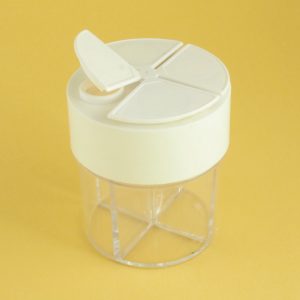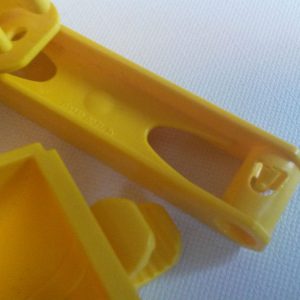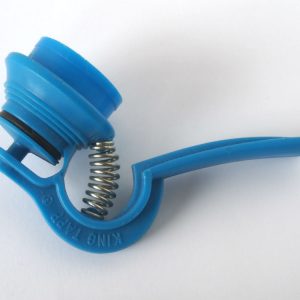Within the field of plastic products, stress cracking is a common, if not the most common, quality problem. Its consequences are often severe since problems tend to occur only after the products have already hit the market. In most cases, however, customer dissatisfaction could be avoided in the design phase. Here is how, but first let’s look at the phenomenon itself briefly (for more in-depth information please see the link at the end of the article).
A short description of Stress-Cracking as a phenomenon
When a plastic component is subjected to stress, force is transmitted along the polymer chains. The molecules need to struggle in order to stay in contact with each other. Under stress the polymer chains start to orientate towards the direction of the pull and some soon some permanent deformation can be measured on the component geometry. This is what we know as creeping. Depending on the level of the load and time, at some point we may notice crazing on the component as small cracks on the component surface. Shortly after this, the part tends to break off. Chemical substances and elevated temperature – separately but especially as a combination – catalyze the process. In such cases, the phenomenon is known as environmental stress cracking (ESC).
How to prevent Stress-Cracking from happening?
Preventing Stress-Cracking requires competent plastic product design? The following aspects should reduce the risk considerably:
- Stress cracking is affected by time, load and temperature. You should define the expected lifetime for the product and recognize the occurring forces, surrounding temperature, and the chemical service environment. Occasional peaks on load or temperature are not dangerous – constant, long term conditions are the determining factors behind stress cracking. Chemical exposure also easily triggers the effect.
- Amorphous materials like ABS, PS, PMMA or PC are more sensitive to continuous load as well as to chemicals than semi-crystalline plastics/polymers. If transparency is not a key issue, steer away from them in applications that involve continuous load.
- When selecting a material, it is wisest to pay attention to the mechanical values at the upper end of the service temperature, not at room temperature.
- Determine the highest stress facing the component as that is the spot where the crack propagation most likely gets started. For example, if your design needs to withstand pull of 1000 Newtons with a cross-section of 20 mm2 leading to stress of 50 MPa, and the tensile strength of the selected material is 60 MPa (in expected long term temperature), you are not safe. It would perhaps be acceptable with a sudden, temporary load, but in order to avoid stress cracking, you should aim to double the strength of the spot and thus cut the stress level to half. This combination of load-time-temperature is case-dependent, but in principle, the stress levels under continuous load should be remarkably lower than the yield or tensile strength of the material is in that temperature.
- Request your supplier for a stress-rupture-curve for the potential materials. They give invaluable information of material behavior under constant load in alternative temperatures. Unfortunately, however, they are rarely available.
- Use reinforced materials. Glass increases the strength of the material and is not equally sensitive to temperature or continuous load.
- Turn the stress into compression instead of tension, if possible.
- Remember that internal stress can also break the component. Screws, metal inserts and poorly designed snap-fits are all features that typically fail under stress cracking. Considerable changes in material thickness may also, in time, cause internal stress and cracking – especially in the case of amorphous plastics.
How to test?
Testing against stress corrosion is difficult since it may take thousands of service hours before the results appear in actual conditions, and you most likely do not have the time at your disposal. It is therefore wise to set the first of your parts from production under stress in an elevated, controlled temperature. If you catalyze the process by adjusting both stress and temperature slightly above the expected values you have at least some indication of the sensitivity of the component (to stress cracking). Do not exaggerate, however, because too high a stress and temperature will inevitably lead to breakage in a short period of time but doesn’t yield results that would have tangible information.
Stress cracking failures are probably so common because designers in general are simply not aware of its existence. If you take the phenomenon and aspects above in consideration as part of your plastic part design, problems are much less likely to occur.




